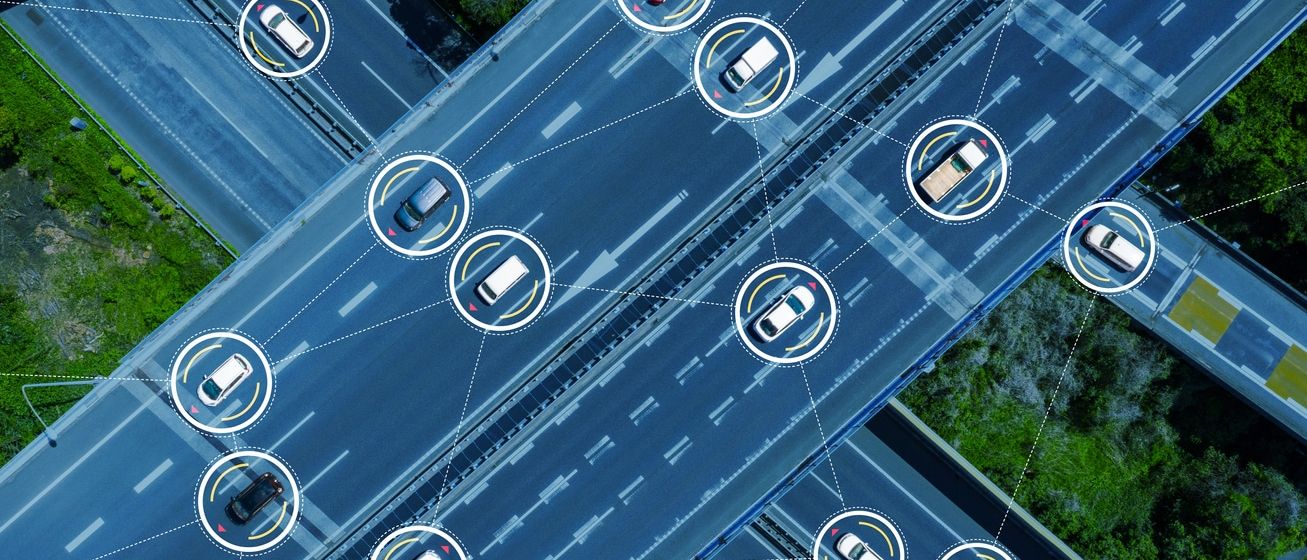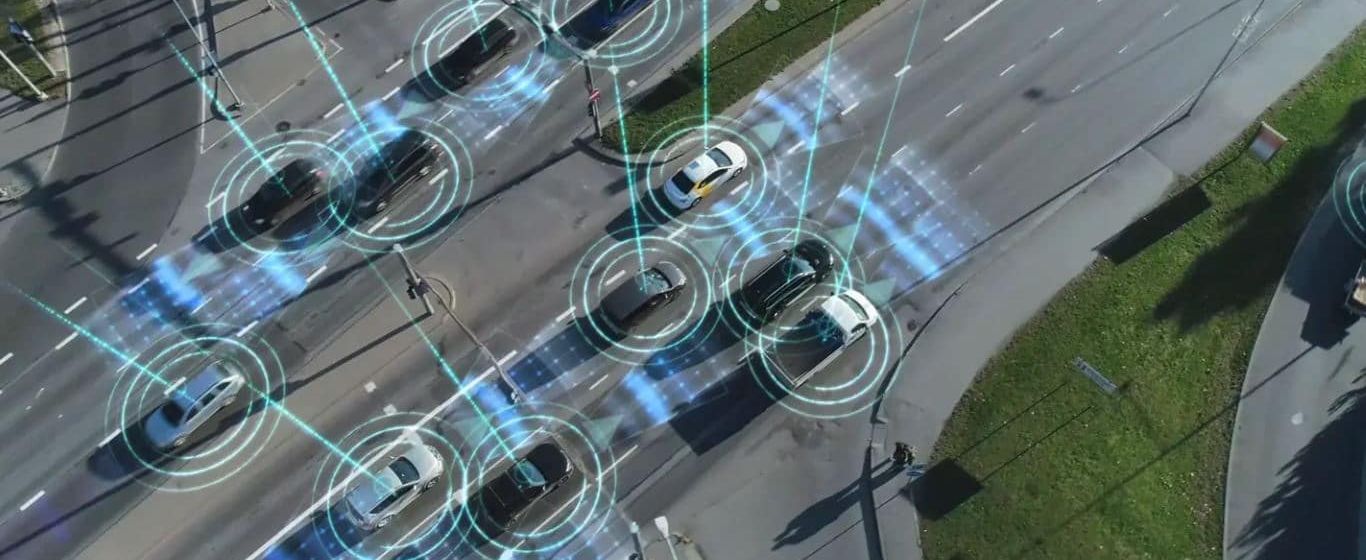
5G Automotive Association (5GAA) to participate in the Global Certification Forum (GCF) online conference “C-V2X Certification and the Roadmap to Connected Mobility.”
The 5G Automotive Association (5GAA) is glad to announce its participation to the Global Certification Forum (GCF) webinar “C-V2X Certification and the Roadmap to Connected Mobility” on 6th October 2021, at 4 pm CEST.
The event will bring together industry experts from vehicle manufacturers, equipment vendors, test houses and certification authorities to discuss why certification is key to the effective rollout of C-V2X systems and how it can be implemented successfully now.
Maxime Flament, 5GAA Chief Technology Officer, will hold a session to disclose the current standard landscape and the global market opportunities for connected vehicles. Moreover, he will join a panel discussion on the GCF’s C-V2X certification programme and how it will benefit several actors of the connectivity ecosystem.
High-speed wireless communications between vehicles and infrastructures, especially cellular vehicle-to-everything (C-V2X) communications, are crucial for the development of autonomous vehicles. Proven interoperability between C-V2X devices is essential to ensure the safety and reliability of such systems.
Since 2019, 5GAA and GCF have been collaborating to investigate the principles and framework for a certification programme – designed specifically for C-V2X technologies. A few months ago, the two partners went one step further by signing a new agreement on a programme that will support the drive for interoperability, reliability, and safety of emerging cellular vehicle-to-everything (C-V2X) systems. A programme that will enable manufacturers to certify their C-V2X capable products – including onboard units (OBU) and roadside units (RSU) – for C-V2X PC5 Mode 4 functionality, thus providing a trusted foundation for C-V2X applications globally.
Join the webinar to discover more about the progress to the full interoperability, reliability and safety of emerging C-V2X systems.
More information and agenda of the event here.
Registration here.

Safety Treatment in V2X Applications
This White Paper describes the new challenges in the treatment of functional safety arising from the introduction of connected and distributed functions, which are typical for cellular vehicle-to-everything (C-V2X) applications. A dedicated 5GAA technical working group performed a detailed analysis to determine, propose, and evaluate possibilities for mobile network operators, vendors, and any further identified stakeholders to provide vehicle original equipment manufacturers (OEMs) what they need to treat safety in new use cases enabled by C-V2X technologies.
Read the full White Paper here.

5GAA and GCF Announce New Agreement on C-V2X Certification Programme
The newly announced programme will provide trusted foundation for C-V2X applications globally.
The 5G Automotive Association (5GAA) and the Global Certification Forum (GCF) have agreed on a new programme that will support the drive for interoperability, reliability, and safety of emerging cellular vehicle-to-everything (C-V2X) systems.
C-V2X – which allows direct wireless communication between vehicles, and between vehicles and the infrastructures on the roadways – is an essential enabler for a safer and more efficient intelligent transportation system. It therefore requires a certification process to ensure compliance with global standards and to provide reliability to manufacturers and users alike.
The newly established programme will enable manufacturers to certify their C-V2X capable products – including onboard units (OBU) and roadside units (RSU) – for C-V2X PC5 Mode 4 functionality.
Many actors of the C-V2X ecosystem will be able to benefit from the new programme. Tier 1 manufacturers of OBUs and RSUs can ensure their products are interoperable with each other in terms of V2V functionality; vehicle manufacturers can rely on intelligent connectivity within automobiles; and insurance companies will have the opportunity to monitor for safe driving practices. Municipal traffic authorities will also be able to trust in the potential of products to operate over their infrastructure, maintaining traffic flows, and all road users – including cyclists and pedestrians, as well as drivers – can look forward to the safer roads promised by intelligent mobility.
GCF’s certification scheme has been evolving since 1999 in alignment with developments in the wireless communication industry. This result stems from the collaboration 5GAA and GFC have reinforced since 2019, to investigate the principles and framework for a certification programme – designed specifically for C-V2X technologies.
This represents the first part of a multiphase certification programme that will evolve from radio layer certification of PC5 Mode 4 (V2V and V2I) to LTE and 5G-NR based V2X-Uu (V2N) using the 4G and 5G cellular network for communications, taking advantage of the increased functionality and performance that 5G brings.
For more information and to register your interest in the new GCF C-V2X certification programme, click here.
Read the press release here.

Deployment band configuration for C-V2X at 5.9 GHz in Europe
This position paper describes 5GAA’s view on deployment band configuration for C-V2X in the 5.9 GHz band. It is our view that the C-V2X industry needs to agree on a commonly applied and unique deployment band configuration for C-V2X direct communications in the 5.9 GHz band. With such an agreement, C-V2X equipment can be configured identically in all vehicles for operation in the 5.9 GHz band, thereby paving the way to interference-free operation of ITS services across Europe.
The deployment band configuration outlined in this paper addresses the initial deployment of C-V2X technologies.

C-V2X – Future proof and compatibility
Cellular vehicle-to-everything, or C-V2X, allows vehicles to communicate with each other and everything around them.
The technology is based on the same radio technologies used for mobile networks around the world and standardised by 3GPP, the global standardisation organisation for all mobile networks.
Millions of vehicles are already connected today.
Discover more about C-V2X on the video below.

5G Automotive Association Presents Latest Developments on C-V2X in China to Boost Automated Driving Revolution
Together with relevant ecosystem actors in China – from Government officials to telecom and automaker companies and the association’s community – the 5G Automotive Association (5GAA) has presented the latest developments on Cellular Vehicle-to-Everything applications and services at GSMA’s Mobile World Congress Shanghai 2021.

System Architecture and Solution Development; High-Accuracy Positioning for C-V2X
The present document aims to study the requirements of positioning, build understanding of the positioning system framework, and offer the corresponding technologies according to the requirements and environments, as well as some demonstrations in High-Accuracy Positioning for Vehicle-to-Everything (V2XHAP) services.
With the evolution of V2X services from assisted driving to automated driving, the use case requirements are also changing in terms of the availability of network coverage, level of uncertainty, availability of features for simultaneous localisation and mapping (SLAM)-based positioning techniques, reliability, latency, speed, data rate, communication range, as well as positioning accuracy, which is changing from metre level to sub-metre level. Different from other services, positioning information is one of the essentials to guarantee the safety of Internet of Vehicles (IoV). Some important KPIs for positioning have been described in 3GPP, such as positioning accuracy, latency, update rate, power consumption, etc. Furthermore, there are some specific needs in terms of V2X service scenarios, such as continuity, reliability, and security/privacy, etc. All positioning KPIs for V2X mentioned above need to be clarified, especially positioning accuracy which is the most basic requirement in V2X service. In some use cases, such as automated driving, remote driving and platooning, centimetre-level positioning with stable performance provides the necessary accuracy and safety assurance.
Read the full Technical Report

C-V2X Use Cases and Service Level Requirements Volume II
Following the first volume (Volume I) set of Use Case descriptions (previously named as ‘WAVE 1’) and the corresponding framework developed in WG1, this document presents the second volume of Use Case descriptions (previously named as ‘WAVE 2’). One of the goals with this second set is to describe advanced Use Cases that have challenging requirements for future communication systems, such as 5G – as reflected in the report title.
The Use Case descriptions are written from the vehicle perspective and strive to be solution agnostic and applicable to both driven and autonomous vehicles. The realisation of Use Cases does not preclude applications performing various tasks supporting the Use Cases, such as collecting information, analysing etc.
Read the full report

Reducing EU Transport Emissions: Can C-V2X Deployment Play a Significant Role?
On 24 November, Euractiv hosted a debate to assess and discuss the benefits of C-V2X deployment in terms of emission reduction by 2050 in Europe.
TNO, a not-for-profit Dutch research institute, presented new research related to traffic efficiency, and the specific C-V2X functionalities that offer the biggest emission reductions and therefore a contribution to the EU’s climate goals ahead of the comprehensive Strategy for a Sustainable and Smart Mobility (part of the European Green Deal).
The Strategy proposes to match measures to the “ambition to achieve the 90% reduction in emissions by 2050” leveraging “digitalisation and automation, enhancing connectivity to the next level and last, but not least, it will ensure safety and accessibility”.
Read the Study
Watch the highlights
Watch the full event
Reducing EU Transport Emissions: Can C-V2X Deployment Play a Significant Role?
On 24 November, Euractiv hosted a debate to assess and discuss the benefits of C-V2X deployment in terms of emission reduction by 2050 in Europe.
TNO, a not-for-profit Dutch research institute, presented new research related to traffic efficiency, and the specific C-V2X functionalities that offer the biggest emission reductions and therefore a contribution to the EU’s climate goals ahead of the comprehensive Strategy for a Sustainable and Smart Mobility (part of the European Green Deal).
The Strategy proposes to match measures to the “ambition to achieve the 90% reduction in emissions by 2050” leveraging “digitalisation and automation, enhancing connectivity to the next level and last, but not least, it will ensure safety and accessibility”.


